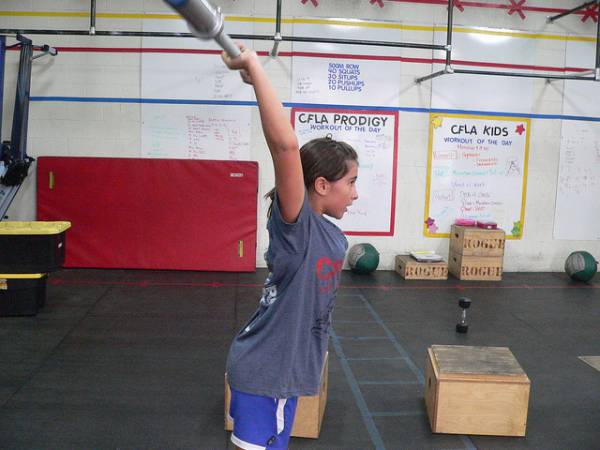In weightlifting, attaining parental buy-in is no easy challenge. The stereotype still exists that lifting weights is dangerous for a child’s health and maturation process. In reality, the assumption that weightlifting will make someone short is the same as that of basketball making someone tall. Interesting how they share a number of biomotor qualities, explicitly the utilization of a jump (or a replication shown within weightlifting).
The Problem of Parents and Weightlifting
A problem you are immediately up against as a coach is within the actual name of our sport – weightlifting, or Olympic weightlifting. Immediately, it states that there is a weight, which requires lifting, much like football requires a foot contacting a ball.
But with children, there is little requirement for any weight to be used in the development process at all. Technique needs to be drilled over and over to develop a movement pattern. Therefore, the title of the sport is already not doing us any favors.
Obviously, parents are unaware of the process of learning, so to some degree, although assumptions are being made, it’s not their fault to have arrived at certain conclusions about the sport. But there are a number of steps we can take to get around these factors.
Education
Parents have little understanding of our sport, let alone our training regimens. I’m consistently asked, “How much do you bench?” This immediately tells me the person asking is oblivious to what I actually do! Also, the news is somewhat tarnished with doping scandals that don’t paint a pretty picture for the sport either.
Educating the parents as to how training is undergone is essential. This should instill faith in the parents that their children are in safe hands. Reassure them that training consists of moving well and that weight will be limited until the athlete can move efficiently and is deemed ready to lift additional load. It should also be pointed out that the additional load will only be slight, and the progression of loading will be over a course of time.
Explain the Benefits
Weightlifting is commonly used to supplement a whole host of other sports. Additionally there are lesser-known benefits, such as improving quality of life at the present and potentially in the future.

In this era of the Xbox and PlayStation, kids are motionless. The development of basic physical literacy is less and less each year. Flexibility, coordination, and balance are prerequisites for weightlifting. Fundamental movement skills and physical literacy are actually further advanced in weightlifting. This, in turn, will reduce the likeliness of injury and skeletal dysfunction. Therefore, the process of learning, and then training, will improve overall quality of life – and potentially for a lifetime.
Change Your Name
If all else fails, then change the name of your class. You can use foreign names for weightlifting, such as halterofilia. If this doesn’t appeal to you, then maybe name it something like “Youth Athlete Development.”
Although this doesn’t help publicize the sport necessarily, it does remove any immediate associations with kids and the lifting of heavy weights. Although not ideal, it’s an option. Perhaps a last resort. However, a class named this way could be viewed and even sold, as a development pathway into weightlifting.
Parental buy-in is an essential component to our sport if we truly expect to attract and create great athletes. Athletes are developed from young ages. The child won’t declare, “I want to try weightlifting,” at this current moment of time, as we are a niche sport with little coverage for him or her to see. It is the parent who will encourage the little person into the sport. So we must make sure the sport is appealing, safe, and appropriate for the child – and matches the parent’s expectations.
Photo 2 courtesy of CFLA Kids.






